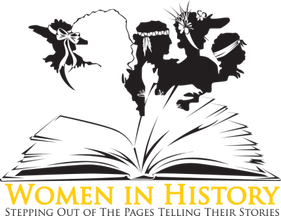WOMEN IN HISTORY - SALLY HEMINGS
Sally Hemings is one of the most famous—and least known—African American women in U.S. history. She was in fact an enslaved woman, concubine, negotiator, liberator, and a mystery.
DATE OF BIRTH
c. 1773
|
PLACE OF BIRTH
Williamsburg, Virginia
|
DATE OF DEATH
c. 1835
|
PLACE OF DEATH
Charlottesville, Virginia
|
FAMILY BACKGROUND
Sally Hemings was the youngest of six children born to planter and slave trader/master John Wayles of Williamsburg and his bi-racial slave Elizabeth “Betty” Hemings. Sally was born the year John Wayles died. According to Wayles last will and testament, the Hemings family was passed on to his oldest legitimate daughter Martha, who was married to Thomas Jefferson. Years after the death of Martha Jefferson, Sally became Jefferson’s concubine, giving birth to seven of his children.
EDUCATION
Sally served as a companion to Jefferson’s legitimate daughters; Martha “Patsy” and Maria “Polly”. She was trained as a ladies maid, seamstress and lace maker. She spoke both English and French. It is uncertain whether or not she was literate.
ACCOMPLISHMENTS
Sally accompanied Polly to France while Jefferson served on a diplomatic mission for the newly formed United States. According to French law, Sally was considered a free woman. Before leaving France, Sally negotiated an agreement that by returning to Virginia and slavery, any children she might give birth to would be provided a viable trade and emancipated when they turned twenty-one. Her sons became talented carpenters and musicians and her daughter was a skilled weaver.
BIBLIOGRAPHY
- Bear, James A., Jr.. "The Hemings Family of Monticello," Virginia Cavalcade 29. 1979.
- Betts, Edwin Morris, ed. Thomas Jefferson's Farm Book. 1953. Princeton: Princeton University Press, 1953.
- Brodie, Fawn M. Thomas Jefferson: An Intimate History. New York: Naughton, 1974
- Dabney, Virginius. The Jefferson Scandals: A Rebuttal. New York: Dodd, Mead, 1981.
- Gordon-Reed. Thomas Jefferson and Sally Hemings: An American Controversy. University Press of Virginia 1997.
- Gordon-Reed, Annette. The Hemingses of Monticello: An American Family. W.W. Norton and Company 2008.
- Kerrison, Catherine, Jefferson’s Daughters: Three Sisters, White and Black, in a Young America. Ballantine Books, New York, 2018.
- Lanier, Shannon and Feldman, Jane. Jefferson’s Children: The Story of One American Family. Random House, 2000.
- Lewis, Jan Ellen and Onuf, Peter S. Sally Hemings & Thomas Jefferson: History, Memory, and Civic Culture, University Press of Virginia, 1999.
- Woodson, Byron W. A President in the Family : Thomas Jefferson, Sally Hemings, and Thomas Woodson. Westport: Praeger, 2001.
WEBSITES
- Sally Hemings - Monticello page
- Sally Hemings - Gale Group Women's History Month
- Hidden Room of Thomas Jefferson's Mansion Solves 200-Year-Old Mystery - https://www.youtube.com/watch?v=9M70KHKCkCA
- The Hidden History of Sally Hemings and Jefferson at Monticello - https://www.youtube.com/watch?v=Jy2Ew7vzskc
CITATION
This page may be cited as:
Women in History. Sally Hemings biography. Last Updated: 12/30/2021. Women In History Ohio.
<http://www.womeninhistoryohio.com/sally-hemings.html>
Women in History. Sally Hemings biography. Last Updated: 12/30/2021. Women In History Ohio.
<http://www.womeninhistoryohio.com/sally-hemings.html>
